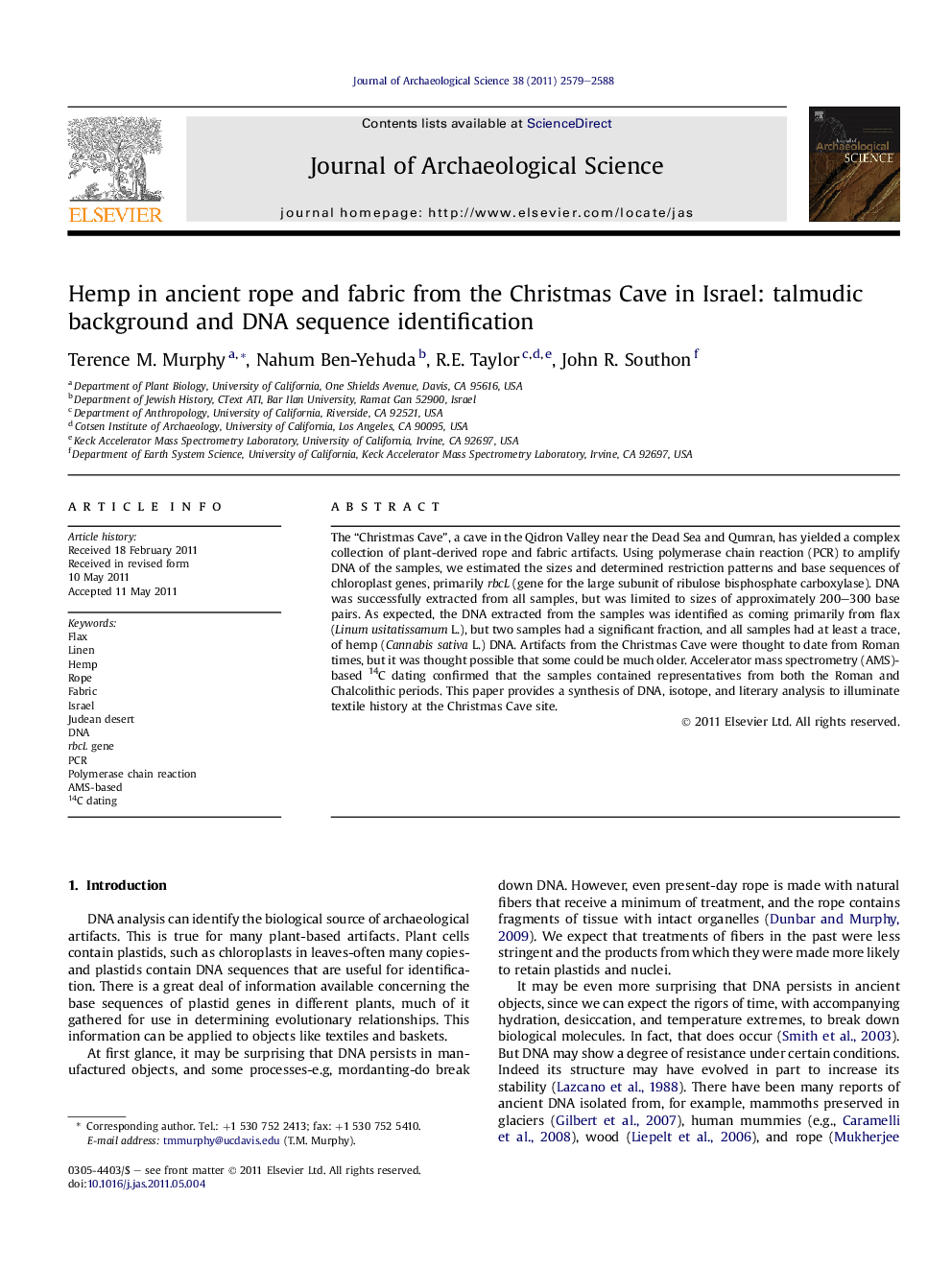| کد مقاله | کد نشریه | سال انتشار | مقاله انگلیسی | نسخه تمام متن |
|---|---|---|---|---|
| 1035708 | 943863 | 2011 | 10 صفحه PDF | دانلود رایگان |

The “Christmas Cave”, a cave in the Qidron Valley near the Dead Sea and Qumran, has yielded a complex collection of plant-derived rope and fabric artifacts. Using polymerase chain reaction (PCR) to amplify DNA of the samples, we estimated the sizes and determined restriction patterns and base sequences of chloroplast genes, primarily rbcL (gene for the large subunit of ribulose bisphosphate carboxylase). DNA was successfully extracted from all samples, but was limited to sizes of approximately 200–300 base pairs. As expected, the DNA extracted from the samples was identified as coming primarily from flax (Linum usitatissamum L.), but two samples had a significant fraction, and all samples had at least a trace, of hemp (Cannabis sativa L.) DNA. Artifacts from the Christmas Cave were thought to date from Roman times, but it was thought possible that some could be much older. Accelerator mass spectrometry (AMS)-based 14C dating confirmed that the samples contained representatives from both the Roman and Chalcolithic periods. This paper provides a synthesis of DNA, isotope, and literary analysis to illuminate textile history at the Christmas Cave site.
► We analyzed DNA from rope and fabric from the “Christmas Cave” in the Qidron Valley.
► Ribulose bisphosphate carboxylase gene DNA was primarily from Linum usitatissamum L.
► Samples also had variable amounts of hemp (Cannabis sativa L.) DNA.
► 14C dating confirmed that samples represented both the Roman and Chalcolithic periods in Israel.
Journal: Journal of Archaeological Science - Volume 38, Issue 10, October 2011, Pages 2579–2588